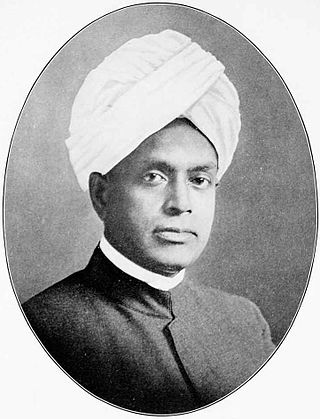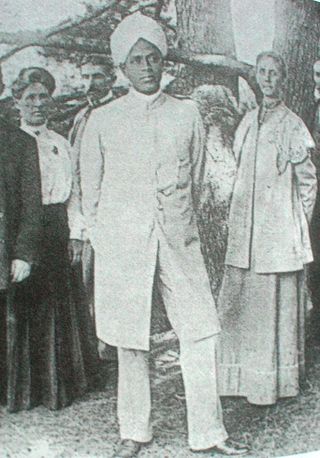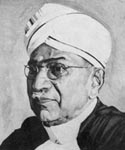
Provinces are the first level administrative divisions of Sri Lanka. Currently, Sri Lanka is divided into 9 provinces. Each province is further divided into districts, which are further divided into divisional secretariats.

The Ceylon Workers' Congress (CWC) is a political party in Sri Lanka that has traditionally represented Sri Lankan Tamils of Indian origin working in the plantation sector of the economy.

Indian Tamils of Sri Lanka are Tamil people of Indian origin in Sri Lanka. They are also known as Malayaga Tamilar, Hill Country Tamils, Up-Country Tamils or simply Indian Tamils. They predominantly descend from workers sent from Southern India to Sri Lanka in the 19th and 20th centuries to work in coffee, tea and rubber plantations. Some also migrated on their own as merchants and as other service providers. These Tamil speakers mostly live in the central highlands, also known as the Malayakam or Hill Country, yet others are also found in major urban areas and in the Northern Province. A majority of Hill Country Tamils are predominantly descendants from the lower working castes of South India. Although they are all termed as Tamils today, some have Telugu and Malayalee origins as well as diverse South Indian caste origins. They are instrumental in the plantation sector economy of Sri Lanka. In general, socio-economically their standard of living is below that of the national average and they are described as one of the poorest and most neglected groups in Sri Lanka. In 1964 a large percentage were repatriated to India, but left a considerable number as stateless people. By the 1990s most of these had been given Sri Lankan citizenship. Most are Hindus with a minority of Christians and Muslims amongst them. There are also a small minority followers of Buddhism among them. Politically they are supportive of trade union-based political parties that have supported most of the ruling coalitions since the 1980s.

The State Council of Ceylon was the unicameral legislature for Ceylon, established in 1931 by the Donoughmore Constitution. The State Council gave universal adult franchise to the people of the colony for the first time. It replaced the Legislative Council of Ceylon, the colony's original legislative body.
The Donoughmore Commission (DC) was responsible for the creation of the Donoughmore Constitution in effect between 1931 and 1947 in Ceylon. In 1931 there were approximately 12% Ceylonese Tamils, 12% Indian Tamils, 65% Sinhalese, and ~3% Ceylon Moors. The British government had introduced a form of communal representation which a strong Tamil representation, out of proportion to the population of the Tamil community. The Sinhalese had been divided into up-country and low-country Sinhalese.
The origins of the Sri Lankan Civil War lie in the continuous political rancor between the majority Sinhalese and the minority Sri Lankan Tamils. According to Jonathan Spencer, a social anthropologist from the School of Social and Political Studies of the University of Edinburgh, the war is an outcome of how modern ethnic identities have been made and re-made since the colonial period, with the political struggle between minority Tamils and the Sinhalese-dominant government accompanied by rhetorical wars over archeological sites and place name etymologies, and the political use of the national past.

British Ceylon, officially British Settlements and Territories in the Island of Ceylon with its Dependencies from 1802 to 1833, then the Island of Ceylon and its Territories and Dependencies from 1833 to 1931 and finally the Island of Ceylon and its Dependencies from 1931 to 1948, was the British Crown colony of present-day Sri Lanka between 1796 and 4 February 1948. Initially, the area it covered did not include the Kingdom of Kandy, which was a protectorate, but from 1817 to 1948 the British possessions included the whole island of Ceylon, now the nation of Sri Lanka.

Sir Ponnambalam Ramanathan, was a Ceylon lawyer and politician who served as Solicitor-General of Ceylon.
The Soulbury Commission, announced in 1944 was, like its predecessor, the Donoughmore Commission, a prime instrument of constitutional reform in British Ceylon. The immediate basis for the appointment of a commission for constitutional reforms was the 1944 draft constitution of the Board of Ministers, headed by D.S. Senanayake. This commission ushered in Dominion status and Independence to Sri Lanka in 1948. Its constitutional recommendations were largely those of the 1944 Board of Ministers' draft, a document reflecting the influence of Senanayake and his main advisor, Sir Ivor Jennings.
Sri Lankan Tamil nationalism is the conviction of the Sri Lankan Tamil people, a minority ethnic group in the South Asian island country of Sri Lanka, that they have the right to constitute an independent or autonomous political community. This idea has not always existed. Sri Lankan Tamil national awareness began during the era of British rule during the nineteenth century, as Tamil Hindu revivalists tried to counter Protestant missionary activity. The revivalists, led by Arumuga Navalar, used literacy as a tool to spread Hinduism and its principles.

The British Ceylon period is the history of Sri Lanka between 1815 and 1948. It follows the fall of the Kandyan Kingdom into the hands of the British Empire. It ended over 2300 years of Sinhalese monarchy rule on the island. The British rule on the island lasted until 1948 when the country regained independence following the Sri Lankan independence movement.

The Mahâ Dissâvas was a Great Officer in the Amātya Mandalaya, or Sinhalese Council of State, in the Sinhalese Kingdoms of monarchical Sri Lanka. Like many of the existing high offices at the time it had combined legislative and judicial powers and functioned primarily equivalent to that of a Provincial governor. The office of Dissava was retained under the successive European colonial powers, namely the Portuguese Empire, the Dutch East India Company and the British Empire. A Dissava was the governor a province known as a Disavanies. With his province, the Dissava held both executive and judicial authority.
The fourth election to the Legislative Council of Ceylon was held in 1924.
The third election to the Legislative Council of Ceylon was held on 21 April 1921.

The Ponnambalam–Coomaraswamy family is a Sri Lankan Tamil Hindu family that was prominent in politics in former British Ceylon and later Sri Lanka from the colonial era to 1972. Many members received imperial honours such as knighthood by the British Crown.
The 1915 Sinhalese-Muslim riots was a widespread and prolonged ethnic riot in the island of Ceylon between Sinhalese Buddhists and the Ceylon Moors. The riots were eventually suppressed by the British colonial authorities.

Sir Waithilingam Duraiswamy was a Ceylon Tamil lawyer, politician and speaker of the State Council of Ceylon.
Native headmen system was an integral part of the administration of the island of Ceylon under the successive European colonial powers, namely the Portuguese Empire, the Dutch East India Company and the British Empire. Native headmen or leaders were appointed by the European colonial administrators to function as intermediates between the Europeans and the native populous. During different periods through this system these headmen functioned in military, policing, administrative and ceremonial capacities. They served as translators, revenue collectors and wielded quasi-judicial powers. Much of the system evolved and changed over time until some of the last vestiges of it were removed in the post-independent Ceylon.

Sri Lanka–United Kingdom relations, or British-Sri Lankan relations, are foreign relations between Sri Lanka and the United Kingdom.
The second election to the Legislative Council of Ceylon was held 20 January 1917.












